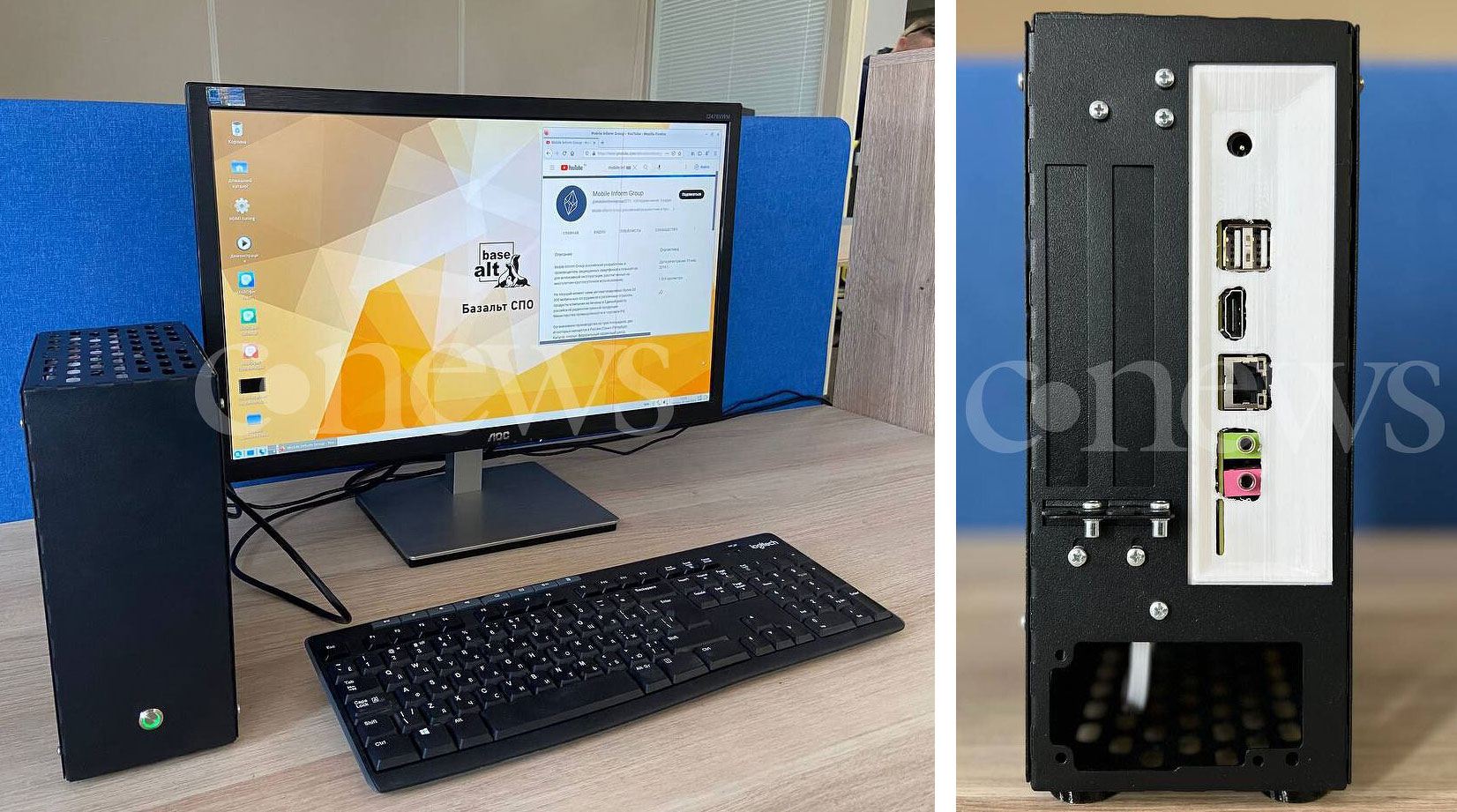Russian 'Anti-Sanctions PC' Powered by New Skif Processor

Earlier this week, Russia’s CNews reported on what it terms an “anti-sanction PC”. This new PC, called the Mobile Inform Group (MIG) Akinak PC, allegedly uses a mix of Russian hardware and software designs so that it can dodge sanctions, and supply companies seeking to serve organizations that are “sensitive to import substitution.”
However, a closer read of the report seems to suggest the new Akinak PC will be pretty slow, even for its mixed office-and-video-conferencing target audience. Moreover, MIG’s description of its supply chain doesn’t inspire much confidence in its ability to mass produce this anti-sanction PC.
After a year in development, Russia’s new general purpose office computer hope has arrived in the form of the MIG Akinak anti-sanction PC. This is a compact, energy-efficient PC powered by the Russia-designed Skif (AKA Scythian) chip. This 24W 64-bit chip is an Arm-based design packing four Cortex A53 cores and PowerVR’s Series8XE GE8300 GPU technology.
With its aging A53 cores (Arm v8, launched 2012), it probably won't be surprising to hear that the Skif processor was first sampled years ago (2019) and designed for the tablet market. Its CPU cores run at up to a modest 1.8 GHz. The Skif boasts a dual-core DSP, AI acceleration, and hardware encryption capabilities. A batch of 1,000 of these SoCs was produced abroad in July 2021 by an unnamed foreign foundry. CNews reports that there are only 10 left (typo?) from the original batch.
For storage, MIG Akinak PCs will have 32 or 64 GB of eMMC on board, with microSD card support and a SATA II interface for additional storage devices up to 2 TB. Currently the M.2 expansion connectors on the motherboard don’t support storage (one port is currently used for Wi-Fi and Bluetooth, the other can be used for cellular data), but the developers are reserving the option to implement M.2 storage if there is demand. Standard RAM is 8 GB of LPDDR4, but will be upgradable to 64 GB, according to MIG.
Much of the Akinak’s touted year of development time seems to have been taken up creating a domestic motherboard and fully testing the platform. It currently runs a pre-installed domestic Linux distribution kit "Alt" from Basalt SPO, but there are plans to get the system ready for Astra Linux, too.
Production Questions Unanswered
We've already mentioned the concerns regarding processor production. Additionally, CNews' report indicates that essential system components such as RAM modules and wireless modules can’t be guaranteed to be sanction-proof, and MIG did not reveal its sourcing for these components. So the Akinak PC's sanction-proofing seems to be largely theoretical at this time.
Get Tom's Hardware's best news and in-depth reviews, straight to your inbox.
With all its conditions fulfilled and no unforeseen hurdles, MIG reckons it could work with partners to produce up to 100,000 Akinak computers per annum. However, meeting such a target would rely on “normal availability” of the Skif processors, and things aren’t exactly normal in Russia at the moment, as the Ukraine war continues to escalate.

Mark Tyson is a news editor at Tom's Hardware. He enjoys covering the full breadth of PC tech; from business and semiconductor design to products approaching the edge of reason.
-
usertests It's a Raspberry Pi 3 with a lot more RAM (seems rather useless to add 64 GB LPDDR4) and possibly a better GPU. A disaster that will be overpriced, but it could work for office use.Reply
Smuggling in mini PCs from China might be a better use of their time. What's an Intel N100, 10x faster? -
helper800 Reply
The point is they are creating self reliant manufacturing. If they can create the backbone of manufacturing for everything but a CPU then that is all they need to 'acquire' or 'procure' to start a homegrown PC industry. A PC from 13 years ago may be 10x slower, but as long as it keeps Russia in business, that's all they need to be profitable, and keep their PC infrastructure from collapsing.usertests said:It's a Raspberry Pi 3 with a lot more RAM (seems rather useless to add 64 GB LPDDR4) and possibly a better GPU. A disaster that will be overpriced, but it could work for office use.
Smuggling in mini PCs from China might be a better use of their time. What's an Intel N100, 10x faster? -
bit_user ReplyPowerVR’s Series8XE GE8300 GPU technology
Looking on the bright side, maybe in-tree support for PowerVR gets improved. If it's truly meant to be sanctions-proof, then they can't rely on proprietary drivers. -
rluker5 I thought Russians could buy from whomever would sell to them, which includes China. Just harder to get large homogeneous orders.Reply -
bit_user Reply
Good question. I know certain countries still conduct non-military trade with Russia, notably South Korea.rluker5 said:I thought Russians could buy from whomever would sell to them, which includes China.
I guess the main issue with PCs is that Intel, AMD, and Nvidia are all US-based. Therefore, they don't formally sell into Russia. You'd have to do grey-market imports, where you buy them in a 3rd country. That's going to push up prices and could limit selection. Could also void support for any products purchased after the sanctions went into effect.
Taiwan also has sanctions on Russia, which should further impact their PC industry. -
As it appears that we have members that just can't stay away from politics in these forums (posts deleted for violation) this thread is now closed.Reply
